This article was written by Kate Gottermeier, Senior Consultant at The Bonadio Group.
Introduction
Fraud risk mitigation is crucial in business operations to safeguard assets, maintain financial integrity, and uphold the trust of stakeholders. The impact of fraud can be devastating, leading to significant financial losses, reputational damage, and legal consequences. Implementing robust fraud risk mitigation strategies helps to prevent and detect fraudulent activities early, reducing the potential for harm. Effective fraud risk management not only addresses the immediate risks but also strengthens the overall control environment, promoting operational efficiency and resilience.
Preventive measures play a crucial role, such as conducting regular risk assessments, developing and implementing fraud strategies, investing in detection methods, and offering continuing education. By integrating these forensic methods, organizations can effectively deter, detect, and respond to fraud, minimizing its impact and preserving their integrity.
Risk Assessment
Identifying potential fraud risks specific to an organization involves a thorough understanding of its operations, industry, and internal processes. This task requires a comprehensive risk assessment that examines various aspects such as financial transactions, supply chain management, employee behavior, and IT systems. By analyzing historical data, industry trends, and internal audit reports, organizations can pinpoint areas most vulnerable to fraud. Tailoring the risk identification process to the unique characteristics of the organization ensures a more accurate and effective approach to fraud prevention, enabling the development of targeted strategies to mitigate these risks.
Once potential fraud risks have been identified, the next crucial step is to evaluate their impact and likelihood. This involves assessing the potential financial, operational, and reputational damage each risk could cause if it were to materialize. By considering factors like past incidents, industry benchmarks, and the effectiveness of existing controls, companies can gauge the true extent of each risk. Ultimately, understanding the impact and likelihood of risks allows organizations to be proactive in their fraud prevention efforts, ensuring that they are prepared to address the most significant threats effectively.
Fraud Prevention Strategies
Implementing strong internal controls and segregation of duties is fundamental to an effective fraud prevention strategy. Internal controls establish a framework of checks and balances designed to safeguard assets, ensure accurate financial reporting, and promote operational efficiency. Segregation of duties is vital as it reduces the risk of fraud by dividing responsibilities among different employees. For instance, the person who authorizes a transaction should not be the same person who processes or reviews it. This separation ensures that no single individual has control over all aspects of a critical process, making it more difficult to commit and conceal fraudulent activities. By instituting these measures, organizations can create a more secure and transparent operational environment.
Conducting regular audits and reviews of financial transactions is a proactive approach to detecting and preventing fraud. Audits, whether internal or external, provide an independent assessment of an organization’s financial health and compliance with regulatory standards. Regular reviews of financial transactions help identify discrepancies, irregularities, or anomalies that may indicate fraudulent activities. These audits should be comprehensive, covering all significant areas. Regular audits also reinforce a culture of accountability and transparency, as employees are aware that their activities are subject to ongoing review and scrutiny.
Educating employees on fraud awareness and prevention is essential for fostering a vigilant and informed workforce. Training programs should be designed to help employees recognize the signs of fraud, understand the organization’s fraud policies, and know the appropriate actions to take if they suspect fraudulent activity. When employees are well-informed and confident in their role in fraud prevention, they become the first line of defense against potential threats, contributing significantly to the organization’s overall risk management efforts.
Detection Methods
Utilizing data analytics and monitoring tools is a powerful method for detecting anomalies that may indicate fraudulent activity. These tools can analyze large volumes of transaction data to identify patterns and trends, flagging unusual or suspicious behavior that warrants further investigation. Fraud detection software can process and evaluate vast amounts of data in real-time, making it possible to detect and respond to fraudulent activities almost instantaneously. Algorithms can be tailored to the specific needs and risk profiles of an organization by continuously learning and adapting to new fraud tactics. By integrating these solutions into their financial and operational systems, organizations can enhance their ability to detect subtle signs of fraud, improve the accuracy of their risk assessments, and reduce false positives, creating a more secure and resilient operational environment.
Conducting surprise audits and forensic investigations is an effective approach to uncovering fraud and ensuring compliance with internal controls. Surprise audits, conducted without prior notice, can reveal irregularities and fraudulent activities that may not be apparent during regular audits. These audits act as a deterrent, keeping employees alert and discouraging fraudulent behavior. When fraud is suspected or detected, forensic investigations come into play. By conducting surprise audits and robust forensic investigations, organizations can identify and address fraud promptly, mitigating financial losses and reinforcing a culture of integrity and accountability.
Continuous Improvement
Reviewing and updating fraud prevention policies and procedures is vital for maintaining an effective defense against fraudulent activities. As organizations grow and change, so do the risks they face, necessitating regular reassessment of their fraud prevention strategies. This involves evaluating the effectiveness of current policies and procedures, identifying areas for improvement, and incorporating new best practices and technologies. Regular reviews ensure that policies remain relevant and robust, addressing any new threats or vulnerabilities that may have emerged. Updating procedures also involves aligning them with the latest regulatory requirements and industry standards.
Conducting regular training sessions and awareness programs is essential for fostering a culture of vigilance and ethical behavior within an organization. These initiatives educate employees about the various forms of fraud, warning signs, and the importance of adhering to internal controls and reporting suspicious activities. Training sessions should be tailored to different roles within the organization, ensuring that everyone, from frontline staff to senior management, understands their responsibilities in fraud prevention. By keeping fraud prevention top-of-mind through continuous education, organizations empower their employees to act as the first line of defense against fraud, thereby enhancing overall organizational security.
Monitoring industry trends and evolving fraud schemes is critical for staying ahead of potential threats. Fraudsters continuously develop new techniques to exploit vulnerabilities, making it essential for organizations to stay informed about the latest trends and emerging risks. This involves regularly reviewing industry reports, participating in professional forums, and engaging with peer networks to share insights and best practices. By proactively monitoring the fraud landscape, organizations can adapt their prevention and detection strategies accordingly, ensuring they remain resilient against sophisticated and evolving fraud schemes.
Conclusion
Proactive fraud risk management is essential for safeguarding an organization’s financial health, reputation, and operational stability. By anticipating and mitigating fraud risks before they materialize, organizations can avoid significant financial losses and legal repercussions. A proactive approach involves continuous risk assessment, implementation of robust internal controls, and ongoing employee education, which together create a comprehensive defense against fraud. It also fosters a culture of transparency and accountability, where potential issues are identified and addressed promptly. In today’s complex and dynamic business environment, waiting to react to fraud after it occurs can be costly and damaging. Therefore, proactive fraud risk management is crucial in maintaining trust, ensuring compliance with regulations, and supporting the long-term success of the organization.


